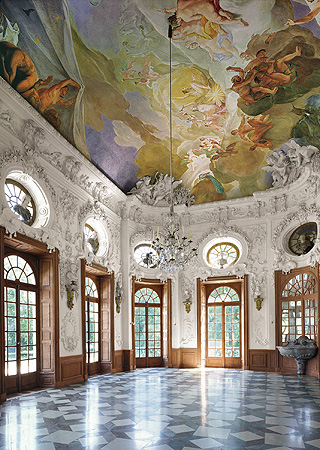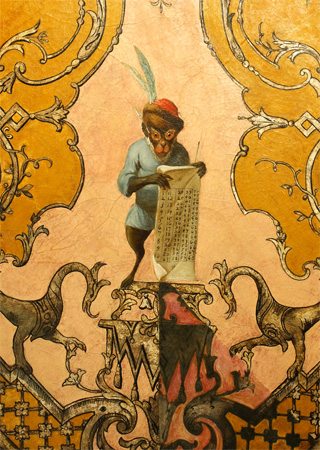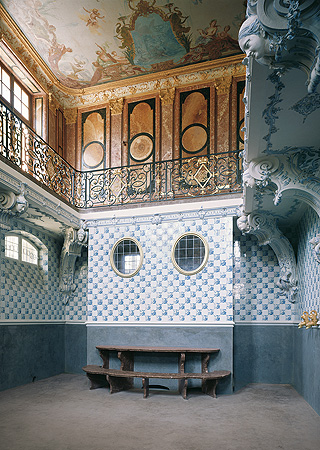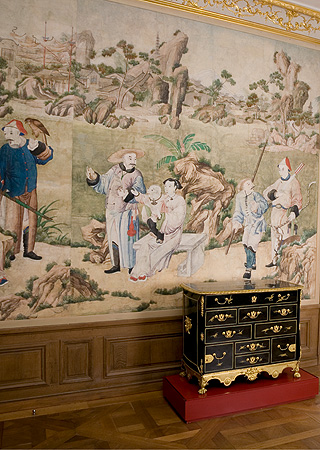Main information:
Park palaces at Nymphenburg Park
Badenburg

Extolling the Badenburg, Pierre de Bretagne, who was Max Emanuel's father confessor, said: »The house of baths is a veritable artistic masterpiece.« The park pavilion was built between 1718 and 1722 according to plans by Joseph Effner, and stands as the central feature of the southern half of the park in its own garden area.
The Banqueting Hall, magnificently decorated with stucco and ceiling frescoes, takes up two storeys. The basement accommodates the bath itself, the heating room, a kitchen and additional bathing rooms. In addition to a painted ceiling with monkey scenes, the Chinese wallpaper in the Electors' Apartment is particularly notable.
As a bathing pavilion, the Badenburg belongs to a long tradition dating back to the opulent baths of the Roman emperors while also including elements of the Islamic bathing culture. Contemporary reports consistently eulogized the small palace.
A travel account of 1792, for example, warns that no visit to Nymphenburg should omit either of two things: »One is the Amalienburg…, the other, in a different corner of the park and built by Elector Maximilian Emanuel, are the finest baths imaginable, splendidly equipped with all conveniences. I do not recall seeing anything more delicate or better thought-out anywhere. The pool is so large that one can comfortably swim in it, and if there are people who just want to watch, there is a place (the gallery) where they can position themselves and look on.«






Facebook Instagram YouTube